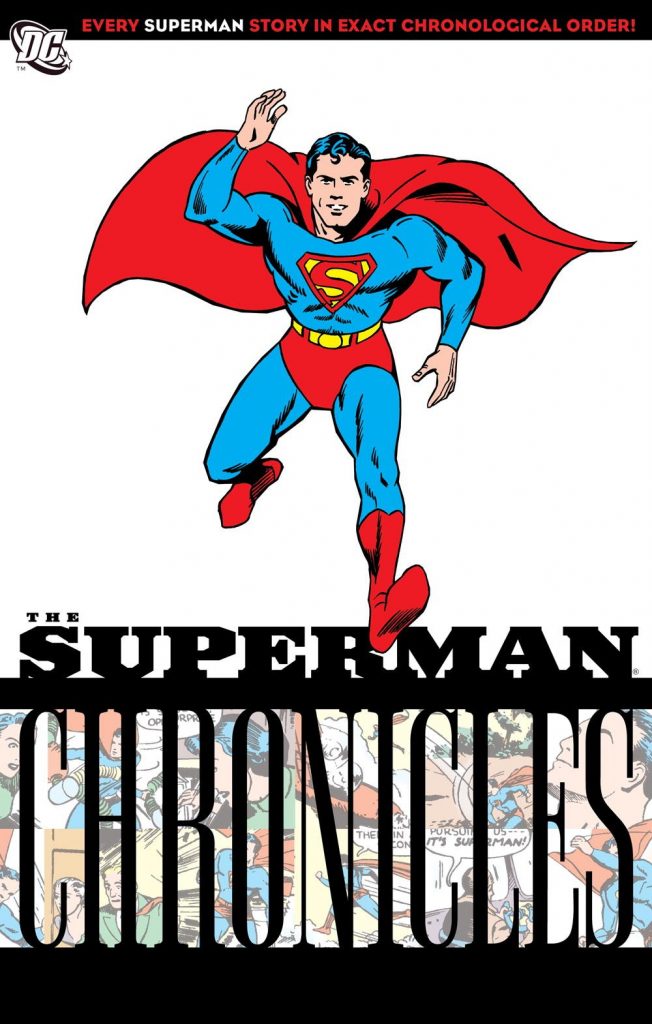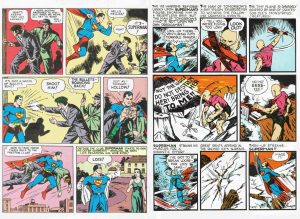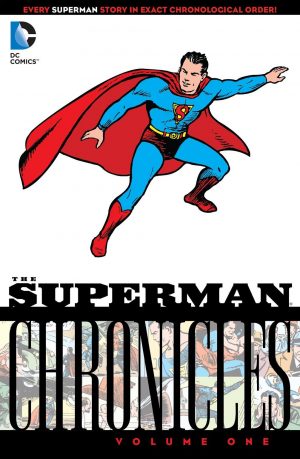Review by Frank Plowright
Having continually expanded Superman’s powers, perhaps Jerry Siegel was beginning to feel he’d created a millstone for himself, as the gangsters Superman regularly dealt with could only really prevent Superman ploughing through them by threatening others. Playing the card of Superman catching bullets before they reached their target certainly resulted in an explosive release of tension when seen in Superman Chronicles Volume Four, but at the expense of cutting off that threat in future stories. The introduction of Kryptonite as Superman’s weakness wouldn’t occur until 1943, so it’s interesting to see Siegel playing with vague alternatives. A villain named the Rainmaker’s primary gimmick is weather control, but he also temporarily halts Superman in his tracks via a paralysing gas of his own devising. It’s unexplained and wears off rapidly, but suggests a chink in Superman’s armour.
Besides seeing Superman deal with an alligator and a boa constrictor amid the usual racketeers, the Rainmaker represents the gradual intrusion of foes akin to Superman. They might not be as powerful, but while readers were familiar with gangsters, hopefully from cinema rather than real life, the likes of the giant seen on Paul Cassidy’s sample art provided a different type of spectacle. Lex Luthor hadn’t yet evolved into the all-purpose evil scientific genius he’d become, and is entirely absent here, but Superman faces a succession of stand-ins.
In Cassidy, Wayne Boring and Jack Burnley’s hands the art is now solidly laid out, with kinetic action scenes, if remaining in the crowded style of the early 1940s. It’s noticeable that Burnley draws a taller, more elegant Superman than Boring and Cassidy, who stick to artistic creator Joe Shuster’s stockier specimen. It would be Burnley’s leaner, more athletic view of the character that eventually prevailed. His art shows an early playing out of a scene that would feature countless times from the early 1940s to the late 1960s as Lois Lane almost discovers Superman’s secret identity, although why she assumes he has one is never explained. To prevent any sleep lost in concern, we’ll provide the spoiler that she’s zombiefied after drinking a potion forced on her, and later remembers nothing. Just as well, because the doctor who subsequently examines her pronounces she’ll have to spend the remainder of her life in a sanatorium. With friends like that…
As with volume four, this selection of early Superman is readable beyond historical interest. There are now hokey and predictable moments that might not have been so easily seen through in 1941, but there are also some stories neatly exploiting the cast. One such has Clark Kent amusingly kidnapped by gangsters who’re unaware of what every reader knows.
These stories are available in hardcover, found in Action Comics Archives 2 and Superman Archives 2 and 3, or on oversized pages in the first Superman: The Golden Age Omnibus. A subsequent bulkier paperback combines this with Superman Chronicles Volume Six as Superman: The Golden Age Volume Three.


